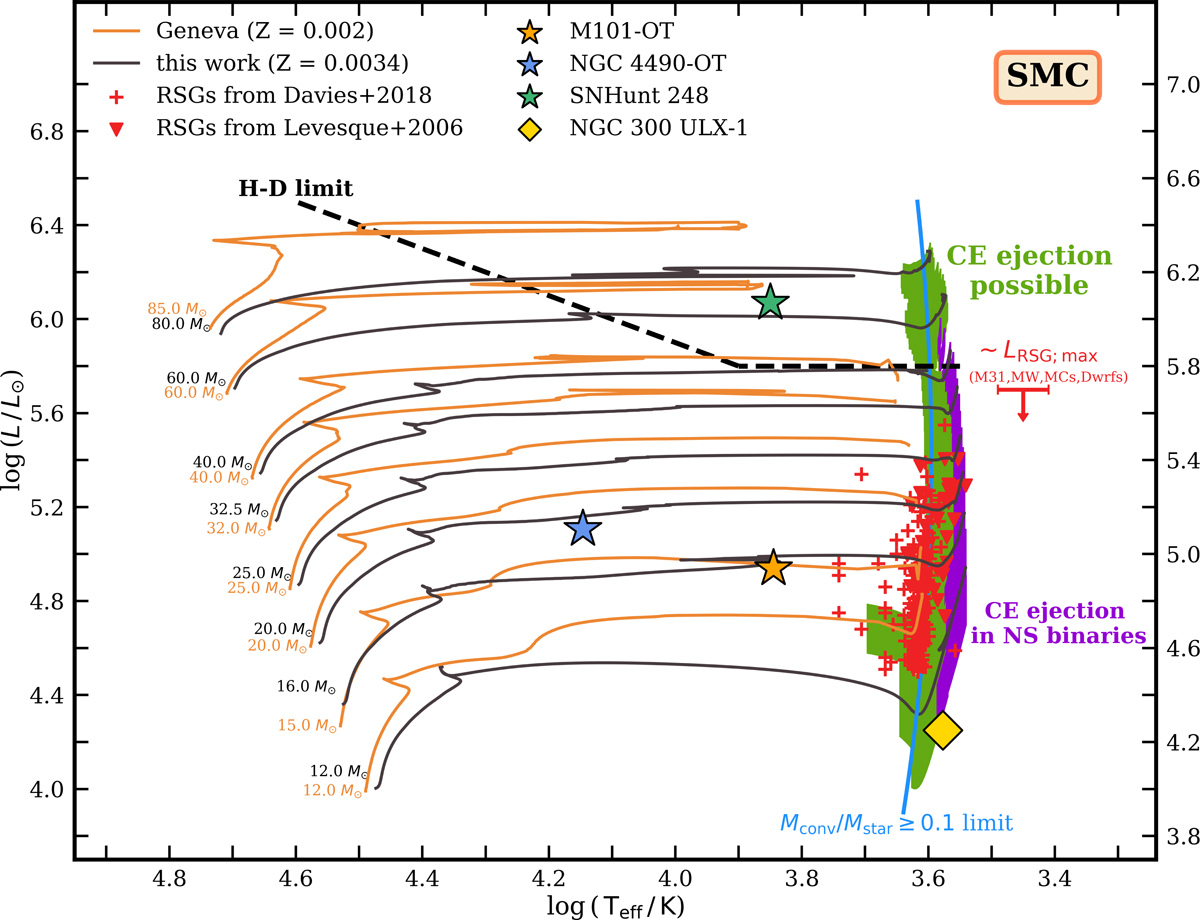Fig. 6.

HR diagram for the SMC-like metallicity (Z ≈ 0.2 Z⊙Venn 1999) in which the green area marks the position of donor stars at the onset of RLOF for which a CE evolution with a successful CE ejection in BH binaries is possible. A smaller violet area marks the subset of donors for which CE ejection is also possible in the case of NS accretors (MNS = 2 M⊙). A definitive association of donors to successful CE evolution events with cool (red) supergiants ( log(Teff/K) ≲ 3.7) is clear. Two sets of selected stellar tracks are plotted: models from Klencki et al. (2020), which are the main focus of this paper, and models from Georgy et al. (2013) computed with the GENEVA code. Physical parameters of RSGs observed in the SMC are taken from Levesque et al. (2006) and Davies et al. (2018). The black dashed line marks the empirical Humphreys-Davidson (H-D) limit, beyond which almost no stars in the Milky Way or in the LMC are observed (Humphreys & Davidson 1979, 1994; Ulmer & Fitzpatrick 1998). The light-blue line shows the threshold effective temperature below which at least 10% of the mass of models from Klencki et al. (2020) is in the outer-convective envelope. Colored stars mark the inferred physical parameters of three different massive star progenitors of luminous-red novae (LRNe; Smith et al. 2016; Blagorodnova et al. 2017; Mauerhan et al. 2018). The yellow diamond shows the RSG donor in a pulsating ultra-luminous X-ray (ULX) source NGC 300 ULX-1 (Heida et al. 2019a).
Current usage metrics show cumulative count of Article Views (full-text article views including HTML views, PDF and ePub downloads, according to the available data) and Abstracts Views on Vision4Press platform.
Data correspond to usage on the plateform after 2015. The current usage metrics is available 48-96 hours after online publication and is updated daily on week days.
Initial download of the metrics may take a while.


